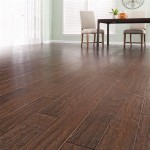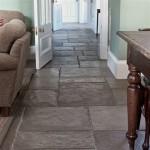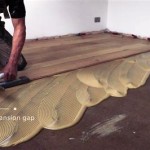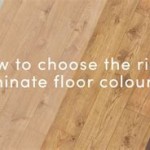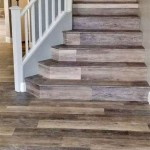How To Seal Cork Flooring: A Comprehensive Guide
Cork flooring offers a unique blend of aesthetics, comfort, and sustainability, making it a popular choice for various spaces. However, its porous nature requires proper sealing to maintain its integrity and longevity. This article provides a detailed guide on how to seal cork flooring effectively, ensuring its protection against moisture, stains, and wear.
The necessity of sealing cork flooring stems from its inherent properties. Cork is derived from the bark of the cork oak tree, and its cellular structure contains millions of microscopic air-filled cells. This structure contributes to its characteristic cushioning, sound absorption, and thermal insulation. However, these cells also make it susceptible to absorbing liquids, which can lead to warping, staining, and mold growth. Sealing creates a protective barrier, preventing these issues and preserving the floor's original appearance and functionality.
Before embarking on the sealing process, it is critical to understand the different types of cork flooring and the corresponding sealants best suited for each. Cork flooring typically comes in two primary forms: cork tiles and cork planks. Cork tiles are generally smaller and installed using an adhesive, while cork planks are larger and often feature a click-lock system for floating installation. Some cork flooring comes pre-finished with a factory-applied sealant, which offers initial protection but may require additional coats over time. Understanding the specific type of cork flooring installed will influence the choice of sealant and the application process.
Selecting the Right Sealant for Cork Flooring
Choosing the appropriate sealant is paramount for achieving optimal protection and preserving the aesthetic appeal of the cork floor. Several types of sealants are available, each with its own set of advantages and disadvantages. Water-based polyurethane, oil-based polyurethane, and wax-based sealants are common options. Consider factors such as durability, ease of application, drying time, and environmental impact when making a selection.
Water-based polyurethane sealants are a popular choice due to their low odor, fast drying time, and excellent durability. They provide a clear, non-yellowing finish that enhances the natural beauty of the cork. Water-based polyurethanes are also generally considered more environmentally friendly compared to oil-based alternatives. However, they may require more coats to achieve the desired level of protection.
Oil-based polyurethane sealants offer superior durability and water resistance compared to water-based options. They create a hard, protective layer that can withstand heavy foot traffic and spills. However, oil-based polyurethanes have a strong odor, require longer drying times, and tend to yellow over time, potentially altering the floor's original color.
Wax-based sealants provide a natural, matte finish that enhances the texture of the cork. They are relatively easy to apply and maintain, but offer less protection against water and stains compared to polyurethane sealants. Wax-based sealants are typically used on cork flooring in low-traffic areas or as a topcoat over a polyurethane sealant for added protection and aesthetic appeal.
In addition to these common types, specialized cork sealants designed specifically for cork flooring are also available. These sealants often contain additives that enhance their adhesion, flexibility, and resistance to moisture. Consulting with a flooring specialist or manufacturer can help determine the best sealant for the specific type of cork flooring installed.
Preparing the Cork Floor for Sealing
Proper preparation is crucial for ensuring that the sealant adheres correctly and provides optimal protection. This involves cleaning, repairing, and sanding the cork floor to create a smooth, even surface. Neglecting these steps can result in uneven coverage, peeling, and premature failure of the sealant.
Begin by thoroughly cleaning the cork floor to remove any dirt, dust, or debris. Use a soft broom or vacuum cleaner to remove loose particles, followed by a damp mop with a mild detergent specifically designed for cork flooring. Avoid using harsh chemicals, abrasive cleaners, or excessive amounts of water, as these can damage the cork. Allow the floor to dry completely before proceeding to the next step.
Inspect the cork floor for any imperfections, such as scratches, dents, or gaps. Repair any damage before applying the sealant. Small scratches can be lightly sanded with fine-grit sandpaper. Deeper scratches or dents may require filling with a cork filler or patching compound. Follow the manufacturer's instructions for applying and curing the filler or compound. Allow the repaired areas to dry completely before sanding.
Sanding the cork floor creates a smooth, even surface that promotes optimal sealant adhesion. Use a fine-grit sandpaper (180-220 grit) and a sanding block or orbital sander to lightly sand the entire floor. Sand in the direction of the grain to avoid creating swirl marks. Remove any sanding dust with a vacuum cleaner and a tack cloth. Ensure that the floor is completely clean and dry before applying the sealant.
Applying the Sealant to the Cork Floor
The application process varies depending on the type of sealant being used, but some general guidelines apply. Read and follow the manufacturer's instructions carefully. Work in a well-ventilated area and wear appropriate safety gear, such as gloves and a respirator. Applying the sealant in thin, even coats is crucial for achieving a smooth, durable finish.
For water-based and oil-based polyurethane sealants, use a high-quality brush, roller, or applicator pad specifically designed for applying polyurethane. Start in a corner of the room and work in manageable sections, applying the sealant in the direction of the grain. Overlap each stroke slightly to ensure complete coverage. Avoid applying the sealant too thickly, as this can lead to drips, runs, and uneven drying. Allow each coat to dry completely before applying the next coat. Lightly sand between coats with fine-grit sandpaper (220-320 grit) to remove any imperfections and improve adhesion.
For wax-based sealants, apply a thin layer of wax using a soft cloth or applicator pad. Work in small sections, rubbing the wax into the cork in a circular motion. Allow the wax to dry for the recommended amount of time, then buff the floor with a clean cloth or buffing machine to achieve a smooth, polished finish. Multiple coats of wax may be required to achieve the desired level of protection and aesthetic appeal.
The number of coats required will depend on the type of sealant, the traffic level in the area, and the desired level of protection. Generally, two to three coats of polyurethane sealant are recommended for residential use, while commercial applications may require more. Always allow each coat to dry completely before applying the next, and follow the manufacturer's instructions for drying times. Avoid walking on the floor during the drying process.
Once the final coat of sealant has been applied and allowed to dry completely, the cork floor is ready for use. Avoid placing heavy furniture or rugs on the floor for at least 24 hours to allow the sealant to fully cure. Regular maintenance, such as sweeping, vacuuming, and damp mopping, will help preserve the sealant and extend the life of the cork floor. Consider reapplying the sealant every few years to maintain its protective properties.

How To Seal Cork Floors Young House Love

How To Seal Cork Floors Young House Love

How To Seal Cork Floors Young House Love

How To Seal Cork Floors Young House Love

How To Seal Cork Floors Young House Love

How To Seal Cork Floors Young House Love

Sealing Cork Floors Like A Pro

How To Seal Cork Floors Young House Love

3 Types Of Sealants That Work Best For Cork Flooring

Sealing Cork Floors Like A Pro
Related Posts


